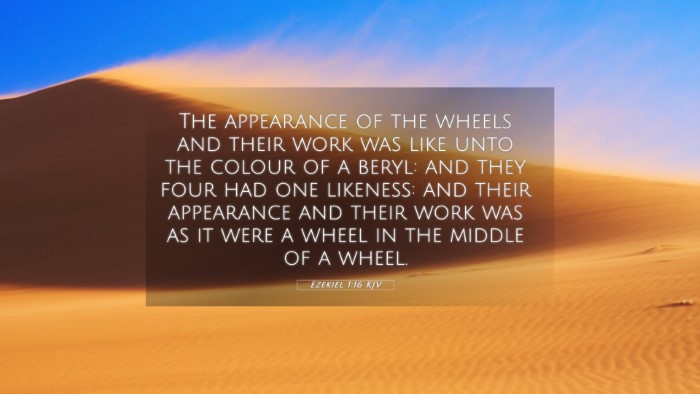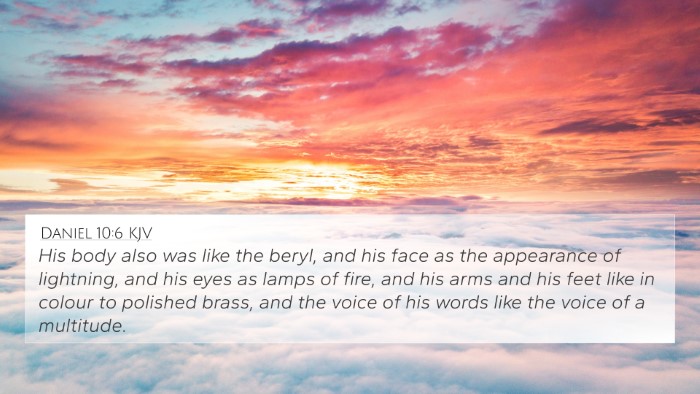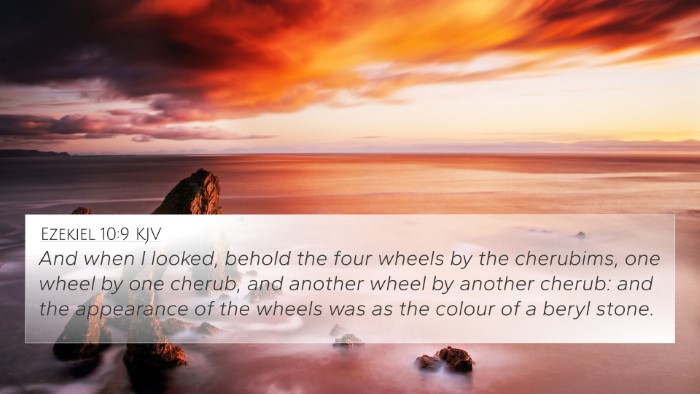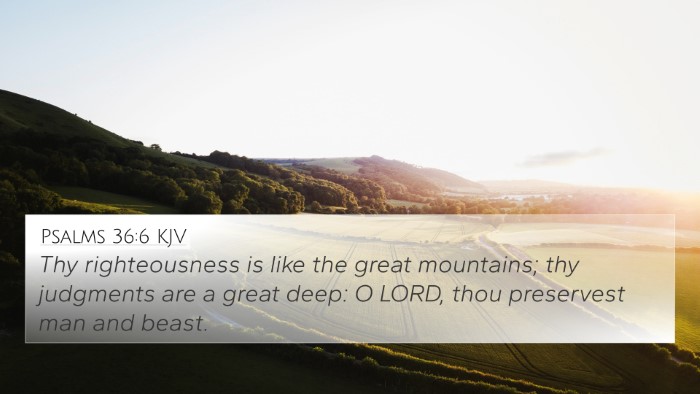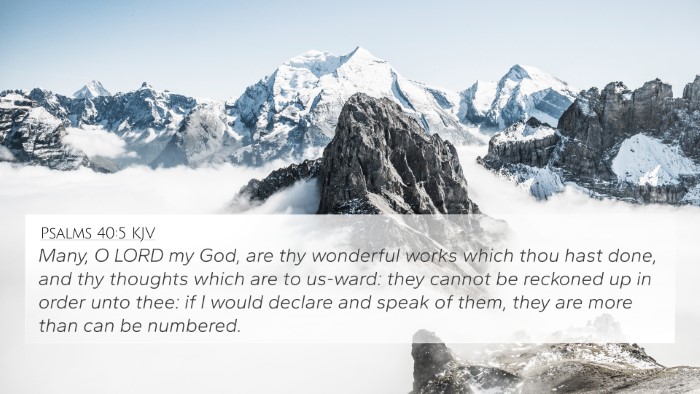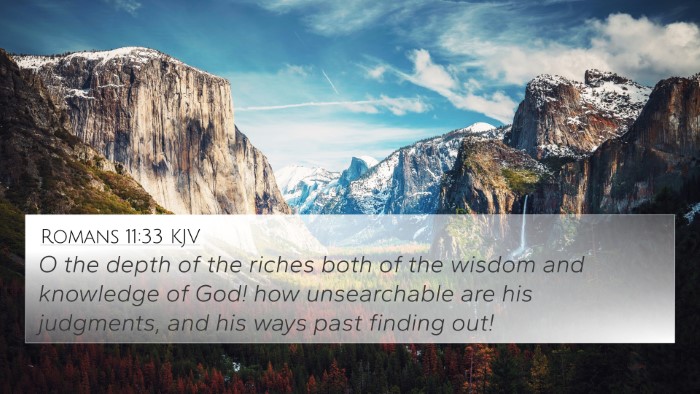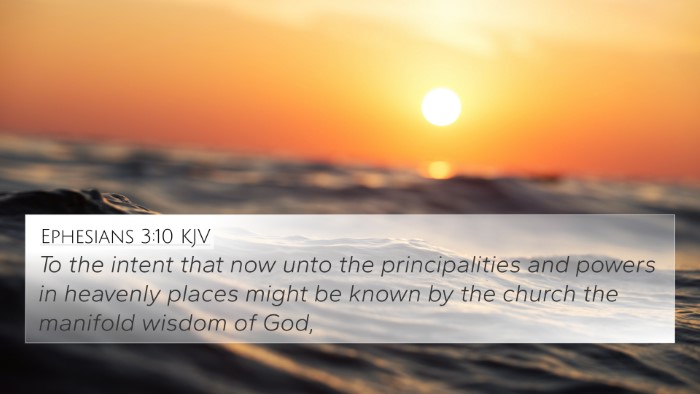Understanding Ezekiel 1:16
Ezekiel 1:16 states, "The appearance of the wheels and their work was like the color of a beryl; and they four had one likeness: and their appearance and their work was as it were a wheel in the middle of a wheel."
This verse is part of Ezekiel's vision of God's glory, where he encounters a divine chariot composed of living creatures and wheels. The imagery is rich and complex, carrying various layers of meaning.
Commentary Insights
According to Matthew Henry, the vivid symbolic representation of the wheels signifies the omnipresence and omnipotence of God. The wheels, having the appearance of beryl, point to the divine nature of God's work and the purity of His intentions. The 'wheel within a wheel' symbolizes unity and complexity in God's plans, indicating that the divine and earthly spheres interconnect in His sovereign will.
Albert Barnes focuses on the wheels' functionality, describing them as instruments for carrying God's presence. He highlights the idea that the wheels move in any direction without turning, symbolizing God's ability to operate effectively and unerringly within the world. The imagery emphasizes divine control and guidance, offering reassurance that God is always in motion, working out His purposes.
Adam Clarke notes the significance of the color beryl, relating it to divine glory and holiness. The resemblance of the wheels implies a sense of harmony among creation, inviting us to recognize that God's creation is intricately designed, with each element serving a purpose. The complex nature of the 'wheel in the middle of a wheel' suggests a profound interconnectedness between divine decrees and human affairs.
Cross References
- Revelation 4:6 - Describes the throne of God and the living creatures, paralleling Ezekiel's vision of divine majesty.
- Isaiah 6:2 - Features seraphim around God's throne, further emphasizing God's holiness and the response of creation in His presence.
- Ezekiel 10:10 - Continues the theme of wheels and the glory of God, offering a deeper understanding of the divine chariot.
- Daniel 7:9 - Presents a vision of God's judgment with similar imagery of thrones and the Ancient of Days, mirroring Ezekiel’s portrayal of divine authority.
- Acts 7:55 - Refers to Stephen seeing Jesus standing at the right hand of God, indicating the continuity between Old Testament visions and New Testament revelations.
- Psalm 104:3 - Describes God making the clouds His chariot, suggesting a cosmic and dynamic interaction with creation.
- Matthew 18:20 - Illustrates God's omnipresence where two or three gather in His name, relating to the infinite reach of His presence symbolized in Ezekiel’s vision.
Thematic Connections
The imagery in Ezekiel 1:16 invites us to reflect on several themes:
- Divine Sovereignty: The ability of God to act in the world, as represented by the dynamic movement of the wheels.
- Interconnectedness of Creation: The 'wheel within a wheel' motif suggests that all aspects of life are under divine order.
- Holy Majesty: The beryl color evokes thoughts of purity and divine glory, emphasizing the reverence due to God.
- God's Guidance: The perpetual movement of the wheels reflects God's active role in guiding humanity.
Insights on Cross-Referencing
Understanding Ezekiel 1:16 can be enhanced through cross-referencing Biblical texts. This method allows for a comprehensive examination of how Scripture interprets itself, revealing connections that span both the Old and New Testaments.
For example, linking this verse with Revelation 4:6 not only highlights the continuity of God's glory but also enhances our understanding through comparative analysis. Engaging in a Bible cross-reference study involves utilizing tools like a Bible concordance or a cross-reference Bible study guide to dive deeper into thematic connections.
Researching Through Cross-Referencing Tools
Many tools are available for effective cross-referencing in the Bible:
- Bible Concordance: A useful resource for finding related verses quickly.
- Cross-reference Bible Study Guides: Helpful for thematic exploration and understanding links between scriptures.
- Bible Reference Resources: Provide context and insight into complicated passages through historical and cultural lenses.
- Comprehensive Bible Cross-reference Materials: These include charts and apps that streamline finding relational scriptures.
Concluding Thoughts
Ezekiel 1:16 serves as a profound reminder of God's glory, His active role in creation, and the interconnectedness of all things under His divine authority. By engaging with cross-references and utilizing study tools, we can deepen our understanding and application of this rich scripture. The journey through the connections between Bible verses unveils the majestic narrative of God's intentions through history.

